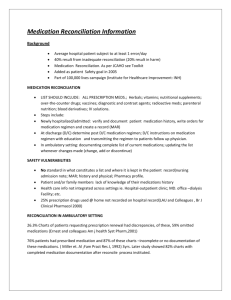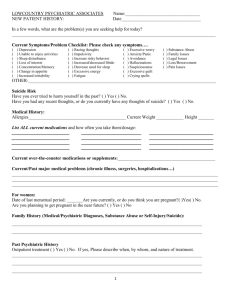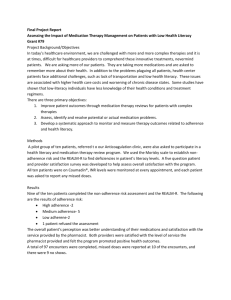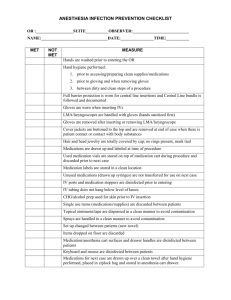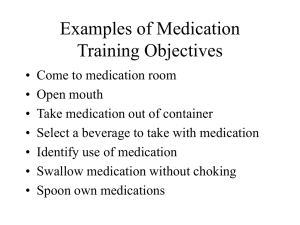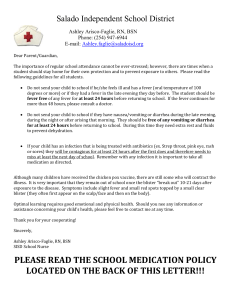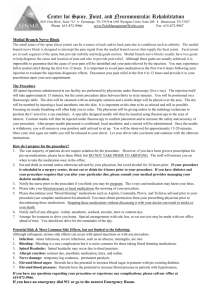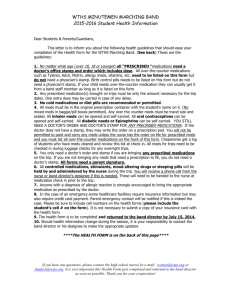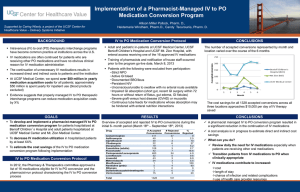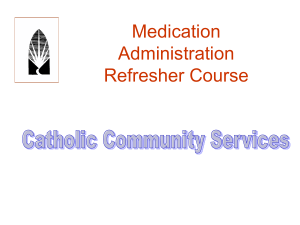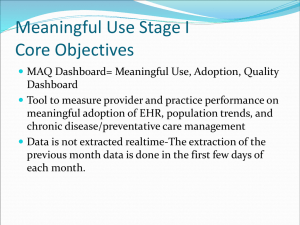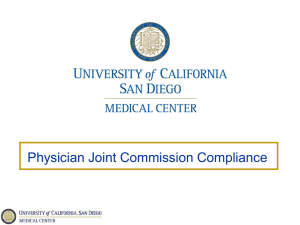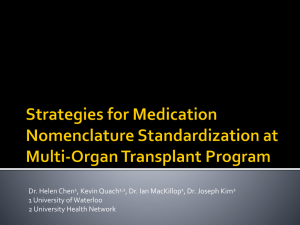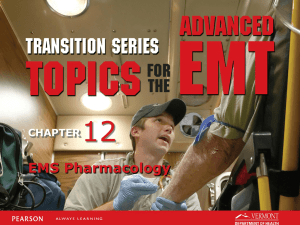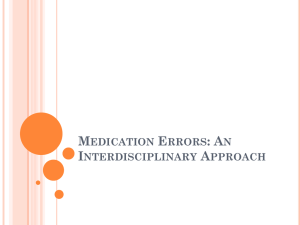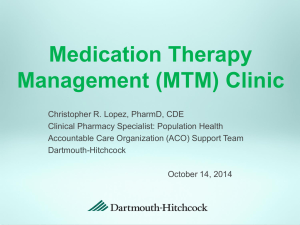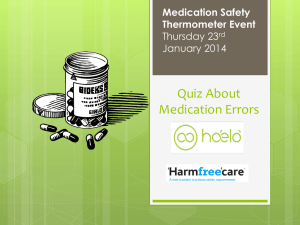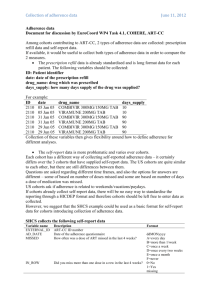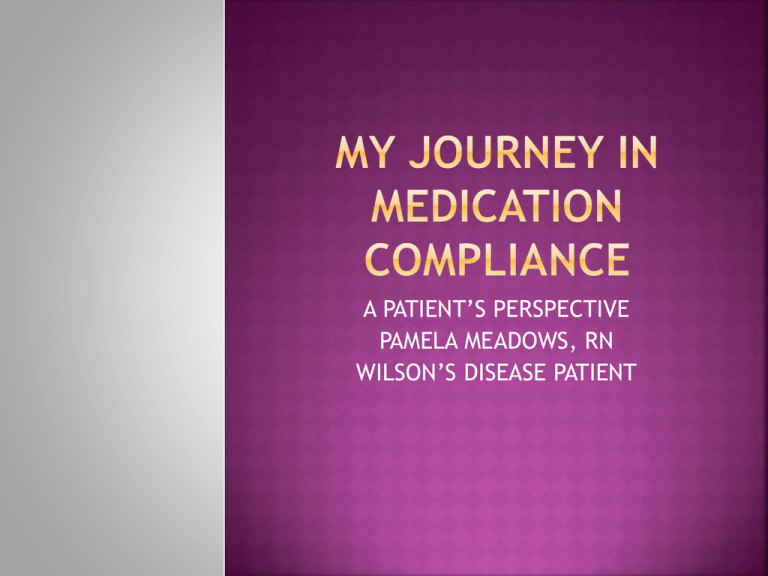
A PATIENT’S PERSPECTIVE
PAMELA MEADOWS, RN
WILSON’S DISEASE PATIENT
Mosby's Medical Dictionary defines health
behavior as:
“An action taken by a person to maintain,
attain, or regain good health and to prevent
illness.”
Adherence and non-adherence are
Health behaviors. If a person is
non-adherent to
their medication regimen, a behavior
change is required to improve
adherence.
The Wilson Disease Center for Excellence at
the University of Michigan, lead by Dr. Fred
Askari, states that “Compliance can be
difficult particularly for people who do not
have disease symptoms, for people who have
an inability to focus, or for people who have
depression.”
I have experienced all three of
these contributing factors in my
journey of medication
compliance/adherence.
APRIL 2001:
DIAGNOSED
WITH
WILSON’S
DISEASE
Asymptomatic
Scared
Researched WD;
only wanted to
take zinc
Still
scared;
switched
meds
MAY 2001:
WENT ON
GALZIN:
ABSOLUTELY
COULD NOT
TOLERATE
JUNE 2001:
WENT ON GNC
OVER THE
COUNTER ZINC
The beginning
of
non-compliance
Taking
medication with
prohibited
foods, liquids,
other
medications
Omitting a dose
or taking at the
wrong time
2002-2005 NURSING
SCHOOL; ENZYMES
CREEPING UP,
DOCTOR SUGGESTING
SYPRINE; INSTEAD, I
SWITCH TO ANOTHER
OTC ZINC
Scared of
side
effects;
didn’t
trust MD
Still very scared of side
effects; comorbidities
2005-2007 STILL
PETRIFIED OF SIDE
EFFECTS OF WILSONS
DISEASE
MEDICATIONS;
REFUSED TO TAKE
ANYTHING OTHER
THAN ZINC
2007 MOVED TO
COLORADO
GOT NEW
HEPATOLOGIST
2007-2009
LIVER ENZYMES DID
NOT IMPROVE
Personal Stress at
all-time high. Still
afraid of side
effects.
Co-morbidities
worsening.
Agranulocytosis
Alopecia
Anorexia, epigastric
pain, nausea,
vomiting,
diarrhea
Aplastic anemia
Blurred vision
Cutaneous macul
Degenerative changes
of the skin (especially
of the neck)
Initial
hypersensitivity:
hives, rash, fever,
anaphylaxis,
lymphadenopathy
Nephrotic syndrome
Obliterative bronchitis
Optical axial neuritis
Oral ulcerations
Proteinuria
Ptosis
Serous retinitis
Thrombocytopenia or
total aplasia
serpiginosa – EPS
lesions
Goodpasture’s
syndrome
Hypogeusia
Hepatotoxicity
Hyperkeratosis
Intrahepatic
cholestasis
Leukopenia
Lichen planus
Lupus-like reaction
Mammary hyperplasia
Myasthenic syndrome
Ageusia
atrophy
Depression of serum
IgA levels
Diplopia
Elastosis perforans
Peers’ warning about medication side effects:
“I don’t know if I would let the doctor put me on
that much right away….it’s awfully risky…”
The “nurse” in me. It’s true.
Sometimes we are our worst enemy….we can
“know too much” that hinders our own
compliance.
Afraid of the doctor’s “ignorance” on managing
my medications.
I did not have a trusting relationship with my
doctor.
Complexity of medication regimen:
I have several other health issues that require
taking medications, and taking them a specific
way. Several are more than once daily. Several
have to be on an empty stomach, apart from
food and other meds. Several have to be with
food. This is very frustrating, and causes me
inconvenience, because I have an extremely…
Busy life:
I work fulltime, attend graduate school full time,
and have several regularly scheduled
commitments outside of these things. I get tired
of taking medications, and trying to take them
all correctly.
Stress
My personal life has been turned upside down
in the past two years with a divorce, my
daughter moving 2,000 miles from me,
financial stressors and….
Physical Challenges
My liver and spleen issues; cholecystitis and
kidney stone
Severe thyroid issues causing extreme loss of
energy, loss of concentration, severe muscle
aches and short stents of depression
Keeping my diabetes under control
In early 2009, eight years into my WD
diagnosis, I was at work, and felt funny. I
looked at my colleague and said, “I can feel
my spleen. It feels swollen.”
I called my specialist, who had scans done
immediately, and sure enough, my liver was
enlarged more and so had my spleen.
What do I do now? I
broke down and decided
to take a “stronger”
medicine. Syprine was
the drug of choice.
Within
six months of beginning
Syprine, all of my WD laboratory
tests were normal. Even my liver
function tests were all
completely normal…for the first
time since my WD diagnosis! I
had no unpleasant side effects
from Syprine, either.
I empower myself. While I do value and need clinicians,
only I am ultimately responsible for my own health. I stay
educated, and in charge of my own health.
I understand potential impact of diagnosis. Being
asymptomatic, I MUST remember this at all times.
I know the prescribed treatment will help.
I know exactly how to take the medication and I realize
this is a life-long treatment.
I am ultimately in charge of making sure my treatment
plan is carried out.
I value the outcome of treatment more than the cost
of the treatment. (Waking up early, being inconvenienced)
I find ways to fit medication regimen into my daily routine.
I have a health care provider that I trust and one who truly
cares.
There
is usually no single reason for
medication non-adherence, therefore there
can be no “one size fits all” approach to
improving adherence.
Address the problems and reinforce positive
behaviors. Get regular follow ups. You must
have a trusting relationship with your
provider. Have a support system in place to
encourage you.
As
a busy person, I struggle with taking my
Syprine in a timely manner.
I had to finally set an alarm clock to take
meds separate from each other and on an
empty stomach. After grumbling to myself a
bit about having to wake up early to take my
Syprine apart from all other meds, it hit me,
“All you have to do is wake up and swallow.”
From then on, it just seems to simple to me.
Find your “mantra.” Stick with it!
Askari,
Fred MD. (2009). Wilson Disease
Center for Excellence. University of
Michigan.
http://www.med.umich.edu/gi/wilsonsdisea
se/
Feinberg, Janice L. PharmD, JD (2006). ASCP
Foundation.
Mosby's Medical Dictionary. (2009). 8th
edition. Publisher: Elsevier.

